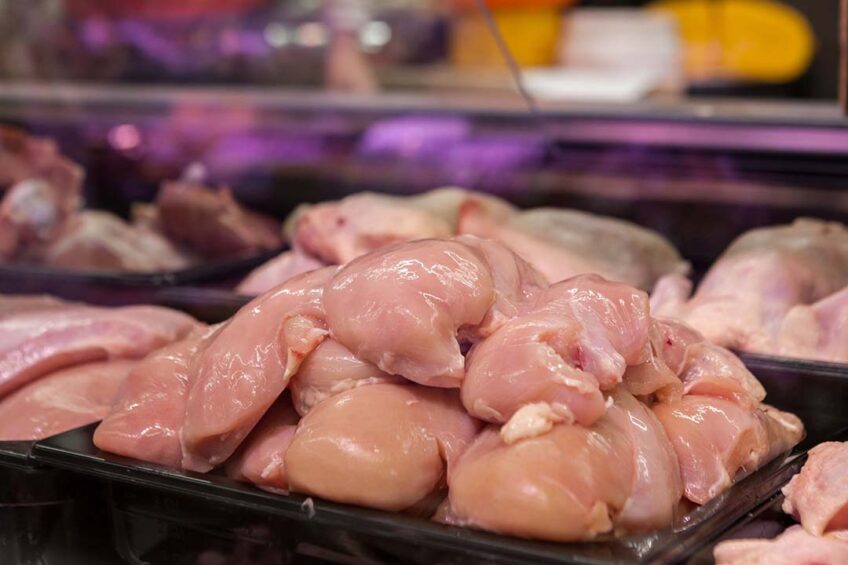Poultry takes more of the UK consumer market

UK consumers have reduced their combined household consumption of beef, pork and sheep by almost 62% from 1980 to 2022, while chicken meat gained share.
The UK poultry sector has benefitted from substantial reductions in red meat consumption over the past 40 years. Figures released by the Department of Environment, Food and Rural Affairs show that red meat has lost share to both the white meat sector and convenience products.
Figures from the Defra Family Food Survey show that in 1980, pork was the most consumed protein with the average person eating nearly 350g per week, followed by beef (275g), lamb and chicken (150g) and fish (95g). But as consumer lifestyles and preferences have evolved, the share of proteins has shifted significantly.
Beef the biggest drop
Beef experienced the most substantial decline, especially during the 1990s due the BSE crisis, and consumers ate less than 100g per week, or around 5kg per year, during 2022. However, this has been partially offset by a rise in ready meals, pies, spreads and canned products.
Annabel Twinberrow, Agriculture and Horticulture Development Board analyst, said consumer trends had changed both in terms of people using different cuts of meat, reducing consumption and also through trading down by protein type in order to save costs. Consumers have cut back due to animal welfare, environment and health reasons.
Price the main factor
“Since our consumer tracker research began in association with YouGov in 2015, price has been a key factor considered when choosing meat, with most recent research indicating price is the most important factor for 78% of consumers.”
Lamb consumption has been declining since 1980 when volumes matched chicken, but is now as low as 25g per week, while chicken, which has become the cheapest protein, has risen to 200g per week. Specialists Kantar believe that price and the fact that cuts, such as chicken breast, are easy to cook with, has been a major plus for the poultry sector.
Decline in pork
The decline for pork appears to be less prevalent but the Defra study shows that from 1980 to 2022, 8.2kg less was consumed annually per head.
Twinberrow said health factors contributed to the changes in eating habits, with consumers likely to perceive chicken and fish as important to a healthy diet, less fatty and more likely to be eaten in households than red meat.
In terms of protein share out of home, there is a similar story, with a gradual decline in red meat consumption since 2001 and a rise in poultry volumes.
Looking at more recent trends, Kantar suggests that total volumes for beef, pork and lamb purchased have seen declines in the past 4 years, while chicken saw growth of 2.4% over the 52 week period ending 24 December 2023.













